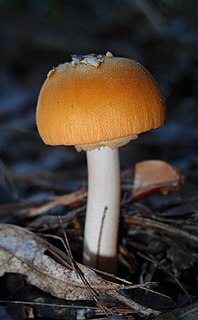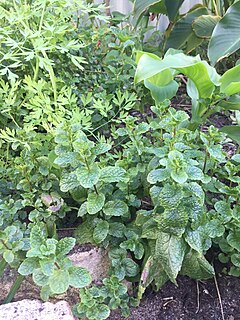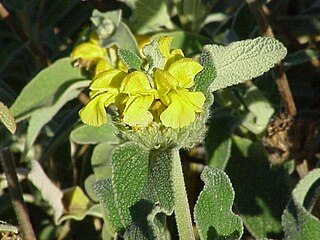
An apricot is a fruit, or the tree that bears the fruit, of several species in the genus Prunus.

Prunus armeniaca, the most commonly cultivated apricot species, also called ansu apricot, Siberian apricot, Tibetan apricot, is a species of Prunus, classified with the plum in the subgenus Prunus. The native range is somewhat uncertain due to its extensive prehistoric cultivation, though almost certainly somewhere in Asia. It is extensively cultivated in many countries and has escaped into the wild in many places.
Legio II Armeniaca was a legion of the late Roman Empire.

Darevskia armeniaca, commonly known as the Armenian lizard or the Armenian rock lizard, is a parthenogenetic species of Darevskia, a genus of lizards belonging to the family Lacertidae, the wall lizards. Darevskia armeniaca is native to the Armenian Highland.
Legio I Armeniaca was a pseudocomitatensis legion of the Late Roman Empire, probably created in the late 3rd century.

Phlomis fruticosa is a species of flowering plant of the Lamiaceae family, native to Albania, Cyprus, Greece, Italy, Turkey, and regions of the former Yugoslavia.
P. armeniaca may refer to:
Armeniaca, a Latin word meaning from Armenia, may refer to :
P. linearis may refer to:

Muschampia tessellum, the tessellated skipper, is a butterfly of the family Hesperiidae. It is found from the southern Balkan Peninsula through Ukraine, southern Russia and Asia Minor, southern Siberia, Mongolia, east to the Amur region.
Coleophora phlomidis is a moth of the family Coleophoridae. It is found in Romania, southern Russia, central Asia and Asia Minor.
Coleophora inusitatella is a moth of the family Coleophoridae. It is found in Algeria, Spain and Portugal.
Wheeleria phlomidis is a moth of the family Pterophoridae. It is found in southern and central Russia, Asia Minor, Iran, Syria, Jordan, the Palestinian Territories and Greece.
Chamaesphecia ramburi is a moth of the family Sesiidae. It is found in France, Spain and Portugal.
Phlomis tathamiorum is a plant species endemic to a small area near the town of Ehden in northern Lebanon. It grows in rocky mountain pastures at elevations of 1400–1700 m. The plant is under threat due to proposed development of the land for other purposes.

Amanita armeniaca is a species of agaric fungus in the family Amanitaceae native to Australia.
Carcharodus stauderi, Stauder's skipper, is a butterfly of the family Hesperiidae. The species is distributed from Morocco to Asia Minor and northern Iran, including Transcaucasia.
Phytoecia armeniaca is a species of beetle in the family Cerambycidae. It was described by Frivaldsky in 1878. It is known from Turkey, Syria, Azerbaijan, Armenia, and Iran.

Phlomis russeliana, Turkish sage, is a species of flowering plant in the mint family Lamiaceae, native to Turkey and Syria in south west Asia. It is often confused with the closely related P. samia, and wrongly marketed as Phlomis viscosa. Growing to 1 m (3.3 ft) tall, it is a herbaceous perennial with hairy, erect stems. The textured, grey-green, sage-like leaves are arrow shaped, and point downwards. In summer, whorls of green buds develop in the leaf axils at regular intervals up each vertical stem, giving a distinctive tiered effect. The buds open to globose clusters of dull yellow hooded flowers.








